Central Bank Scorecard: Steep Challenges ahead for New Global Financial Celebrities
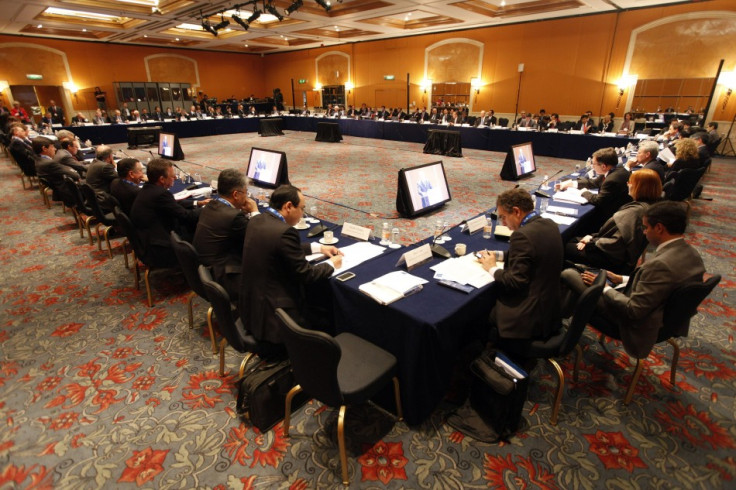
It's been an active year for global central banks, whose leaders have found themselves firmly in the headlines as major players in the financial markets.
In an effort to keep track of the various policy frameworks in place for the coming year, IBTimes UK has put together its own "Central Bank Watch" report with key rates, dates and details from the world's most important policymakers.
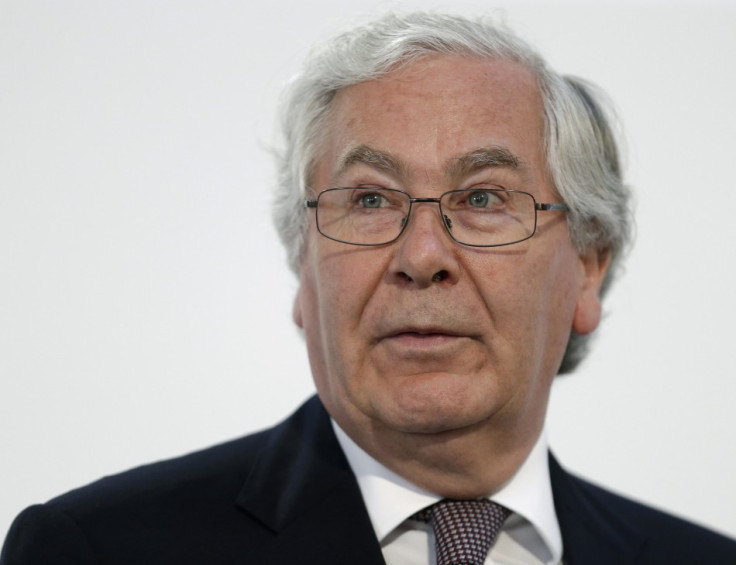
Bank of England: (Mervyn King)
Last announcement: 6 December
Next meeting: 10 January
Key Rate: "Bank rate" at 0.50 percent
2012 GDP: -0.1 percent; 2013 Forecast: 1.1 percent
2012 Inflation: 2.8 percent; 2013 Forecast: 2.8 percent
Highlights from Minutes: "It remained difficult to gauge the underlying state of the UK economy with precision, given the continuing influence of a number of temporary factors on the output data. In the ONS's second estimate of GDP in the third quarter, growth had been unrevised at 1.0 percent. It seemed likely that headline GDP growth had embodied a substantial contribution from the combined effects of the bounce-back in activity following the reduction in output associated with the additional Jubilee bank holiday and of a boost to activity from the Olympic Games. The ONS's initial estimates of the expenditure breakdown suggested that household consumption had increased by 0.6 percent in the third quarter, which had been less than the Committee had expected given the anticipated boost from the Olympic Games."
The Story:
The UK is essentially playing the role of global "lab rat" in the great experiment of austerity versus stimulus. Chancellor George Osborne's "Plan A" of deep public spending cuts and modest tax increases has, to date, delivered at best uneven growth and narrowly improving finances or at worst permanently destroyed portions of the public sector's growth capacity and set the nation on a path of below-trend growth for the next decade.
Meanwhile, public faith in the government's ability to manage the economy is fading and all three of the major ratings companies say they could lower the UK's triple-A credit rating if things don't improve.
Against that backdrop, the Bank of England is going through its own inner turmoil with the impending departure of governor Mervyn King, the snubbing of his deputy Paul Tucker in favour of the first non-Briton (Canada's Mark Carney) to run the Bank in more than three centuries and suggestions that it's neither sufficiently independent from the current government or sophisticated enough to take on its new role of chief market watchdog next year.
That said, King and his Monetary Policy Committee colleagues seem to have reached collective agreement on the need to keep a stern eye on inflation - which is accelerating at a mystifyingly fast 2.7 percent even as the economy appears ready to contract again - before adding to its £375bn programme of quantitative easing.
But with the original stock of QE purchases maturing in March the BoE will need to decide quickly whether it needs to reinvest that principal or top up the existing programme.
https://www.bankofengland.co.uk
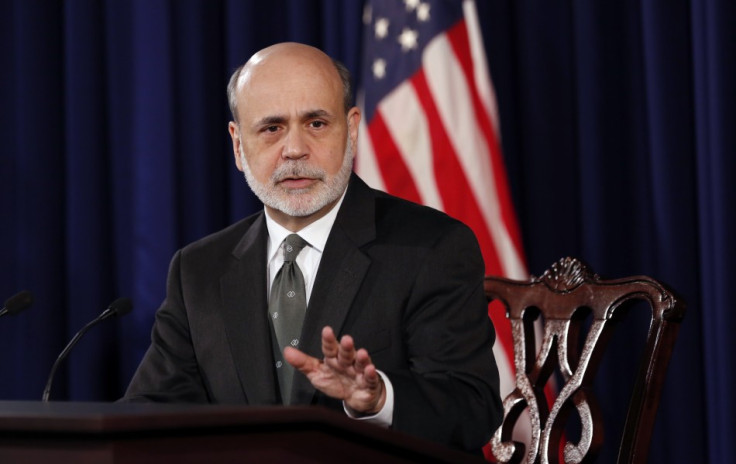
Federal Reserve: (Ben Bernanke)
Last announcement: 12 December (Minutes released 6 January)
Next meeting: 29 January to 30 January
Key Rate: "Fed Funds" target rate at 0.0 percent to 0.25 percent
2012 GDP: 2.2 percent; 2013 Forecast: 1.7 percent
2012 Inflation: 2.1 percent; 2013 Forecast: 1.9 percent
Highlights from statement: "The Committee ... currently anticipates that this exceptionally low range for the federal funds rate will be appropriate at least as long as the unemployment rate remains above 6-1/2 percent, inflation between one and two years ahead is projected to be no more than a half percentage point above the Committee's 2 percent longer-run goal, and longer-term inflation expectations continue to be well anchored. The Committee views these thresholds as consistent with its earlier date-based guidance. In determining how long to maintain a highly accommodative stance of monetary policy, the Committee will also consider other information, including additional measures of labor market conditions, indicators of inflation pressures and inflation expectations, and readings on financial developments. When the Committee decides to begin to remove policy accommodation, it will take a balanced approach consistent with its longer-run goals of maximum employment and inflation of 2 percent."
The Story:
Much has been written about the historic change in tone by the Fed with respect to guiding interest rate policy with firm benchmarks linked to both inflation and employment but the underlying strategy of and chairman Ben Bernanke and his colleagues appears to have remained consistent: low rates and ample liquidity ($85bn each month: $40bn MBS and $45bn Treasuries) will continue to be the twin pillars of monetary policy the Fed will use in order to ensure stable growth for 2013 and beyond.
The US faces two enormous short-term challenges at the government level, however, in the form of the impending fiscal cliff and subsequent debt ceiling debate, both of which could undo the Fed's efforts. With both risks still alive at the time of Bernanke's last meeting, the Fed lowered the floor of its 2013 growth forecast to 2.3 percent from 2.5 percent and held its upper band at steady 3 percent.
Complicating the Fed's position is the fact that while the US housing market is showing consistent improvement pointing to a sustained, if modest, recovery, labour market growth remains docile. Average monthly job creation slowed to an average of 151,000 this year from 153,000 in 2011 and the 7.7 percent jobless rate is still a long way from the Fed's "full employment" assumption of between 5.2 percent and 6 percent.
http://www.federalreserve.gov/monetarypolicy/fomccalendars.htm
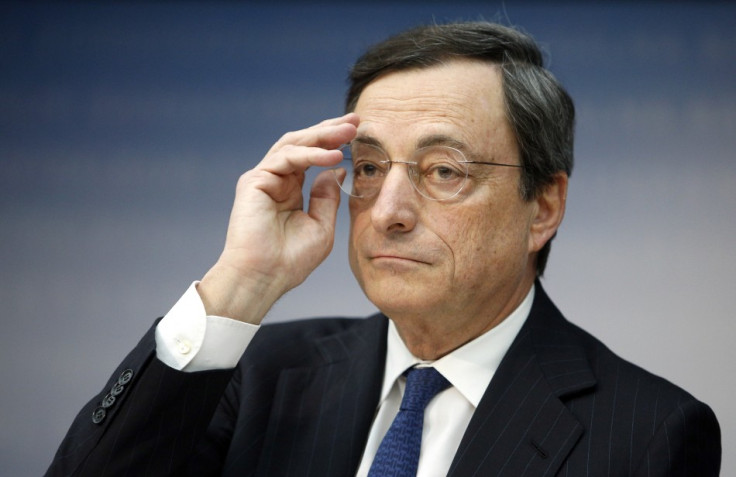
European Central Bank: (Mario Draghi)
Last Meeting: 6 December
Next Meeting: 10 January (Frankfurt)
Key rates: "Fixed rate tenders" in "main refinancing operations" rate at 0.75 percent; "Deposit Facility" at 0.0 percent; "marginal lending facility" at 1.5 percent.
2012 GDP: -0.5 percent; 2013 Forecast: -0.2 percent
2012 Inflation: 2.5 percent; 2013 Forecast: 1.8 percent
Highlights from Minutes (press conference remarks): "Over the policy-relevant horizon, inflation rates should remain in line with price stability. The underlying pace of monetary expansion continues to be subdued. Inflation expectations for the euro area remain firmly anchored in line with our aim of maintaining inflation rates below, but close to, 2% over the medium term. The economic weakness in the euro area is expected to extend into next year. In particular, necessary balance sheet adjustments in financial and non-financial sectors and persistent uncertainty will continue to weigh on economic activity. Later in 2013 economic activity should gradually recover, as global demand strengthens and our accommodative monetary policy stance and significantly improved financial market confidence work their way through to the economy. In order to sustain confidence, it is essential for governments to reduce further both fiscal and structural imbalances and to proceed with financial sector restructuring."
The Story:
ECB president Mario Draghi stamped his authority on the markets earlier this year with a vow to preserve the euro at all costs. Despite having yet to purchase a single security under the mandate of that pledge, the so-called Draghi Effect has had a profound influence on asset prices in the second half of this year.
Described in similar terms as the "Bernanke Put", Draghi's creation of the Outright Monetary Transactions programme has lifted stocks and the single currency, substantially lowered borrowing costs for Spain and Italy and allowed European leaders the breathing space to devise longer-term solutions for Greece and the EU's financial sector.
European growth, however, appears to be unaffected by the Draghi Effect, and the governing council recently lowered its GDP forecasts for this year and next, suggesting the region-wide recession will likely drag on until at least 2014.
Inflation, however, the old "single needle" in the ECB's compass, remains above its preferred 2 percent target (2.2 percent in November) but the stresses seen both in GDP growth and European labour markets (where the jobless rate sits at a record 11.7 percent) mean upward price pressures are unlikely to trouble the panel in the coming year.
That's a good thing, considering the new remit the ECB is preparing to take on when it assumes its responsibilities as the region's banking supervisor in March of 2014.
http://www.ecb.int/home/html/index.en.html
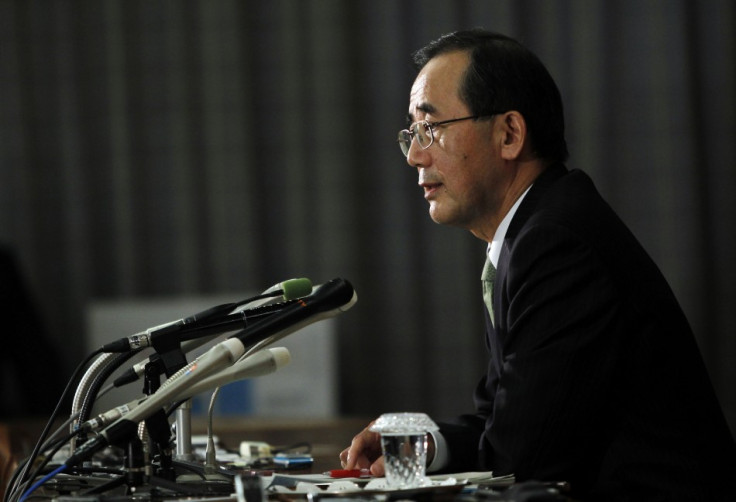
Bank of Japan: (Masaaki Shirakawa)
Last meeting: 20 December (Minutes published 25 January)
Next meeting: 21 January to 22 January
Key rate: "Uncollateralized overnight call rate" at 0.07 percent to 0.095 percent
2012 GDP: 1.9 percent; 2013 Forecast: 0.2 percent
2012 Inflation: 0.0 percent; 2013 Forecast: 0.0 percent
Highlights from Statement: "Overseas economies remain in a deceleration phase. In global financial markets, while investors' risk aversion on the back of the European debt problem has abated recently, particular attention should be given to developments in these markets. Under such circumstances, exports and industrial production have decreased, affecting domestic demand including business fixed investment. Business sentiment -- particularly that in manufacturing -- has become cautious ... there remains a high degree of uncertainty concerning Japan's economy, including the prospects for the European debt problem, the momentum toward recovery for the U.S. economy, the possibility of emerging and commodity-exporting economies making a smooth transition to the sustainable growth path, and the effects of the recent bilateral relationship between Japan and China. Furthermore, attention should continue to be paid to the effects of financial and foreign exchange market developments on economic activity and prices."
The Story:
Just as the Fed is testing a new approach to deliver its dual mandate, the Bank of Japan is similarly considering revising its long-held targets for inflation. The two major differences, however, are that the BoJ needs much "more" inflation and the desire from change is more likely the result of last week's sweeping victory for incoming Prime Minister Shinzo Abe.
Masaaki Shirakawa, perhaps feeling the pressure from Abe's vocal desire to have the bank dig deeper into its toolbox and end the nation's two-decade economic malaise, added 76tn Yen to its asset purchase programme and said he'd think about altering his preferred 1 percent inflation target. He might as well, given the Abe's going to use his overwhelming mandate to change the Bank Act and demand that it work towards pumping even more cash into the moribund economy to spark inflation closer to 2 percent.
Of course, given Abe's strident approach to Japan's relationship with China - its old adversary and most important trading partner - the work of Shirakawa-san or his successor could prove fruitless, particularly if trade continues to stall as a result of the new anti-détente. And this excludes the challenge presented by Japan's dismal demographics and miserable public finances, which are staggering under a 10 percent budget deficit and 230 percent of debt to GDP, according to Moody's Investors Service: "The Japanese government will need to reduce the budget deficit and revive the country's growth potential, in order to maintain fiscal sustainability. These credit challenges will intensify over time in the absence of effective policies, the government's response to which will ultimately shape Japan's credit profile (Aa3 Stable) in the decade ahead."
http://www.boj.or.jp/en/mopo/mpmsche_minu/index.htm/

People's Bank of China: (Zhou Xiaochuan)
Last rate decision: 6 July
Next meeting: unknown
Key rate: "One-year benchmark loan interest rate" at 6 percent; "One-year benchmark deposit rate" at 3 percent
"Required Reserve ratio": Big banks, 20 percent: Mid-sized banks, 18 percent; Rural co-operatives, 16.5 percent
2012 GDP: 7.8 percent; 2013 Forecast: 8.6 percent
2012 Inflation: 2.9 percent; 2013 Forecast: 3.1 percent
Highlights from minutes (online statement): "The Monetary Policy Committee of the PBC convened its second quarterly meeting in 2012 in Beijing days ago. The participants analyzed (sic) current economic and financial situations at home and abroad. In their view, China's economic and financial sectors were developing in a generally stable manner. The economic growth was within the range of the policy target while the growth of the overall price level slowed down."
The Story:
Zhou Xiaochuan's 10-year run at the helm of the PBOC may be coming to an end after his name was dropped from the influential Communist Party Central Committee at the last major regime change in November, suggesting the 64-year-old governor is nearing retirement. His successor faces a daunting challenge in continuing to steer the nation's "economic miracle" into a soft landing while keeping inflation tame and workers active. Not to mention defending accusations of being a currency manipulator despite having dropped the dollar peg some seven years ago.
Zhou continues to push the message that the PBOC is planning to promote Yuan convertibility and increase exchange rate flexibility and has hinted at easier controls for interest rate policy, but it does seems as if much of 2013 will be "wait and see" for the bank as it transitions with a new leader and gauges the impact of the 50 basis points in rate cuts delivered in the first half of 2012. Lowering the reserve ratio requirements of the bigger banks, it could be argued, was perhaps an even more powerful stimulus that allowed broad money supply to grow faster in the second half and inch closer to the bank's preferred 14 percent target. If inflation accelerates at the current 3 percent pace and growth improves into the mid 8 percent range next year, Zhou's successor may not feel the need to tinker with the key rate in his first few months in office.
http://www.pbc.gov.cn/publish/english/963/index.html
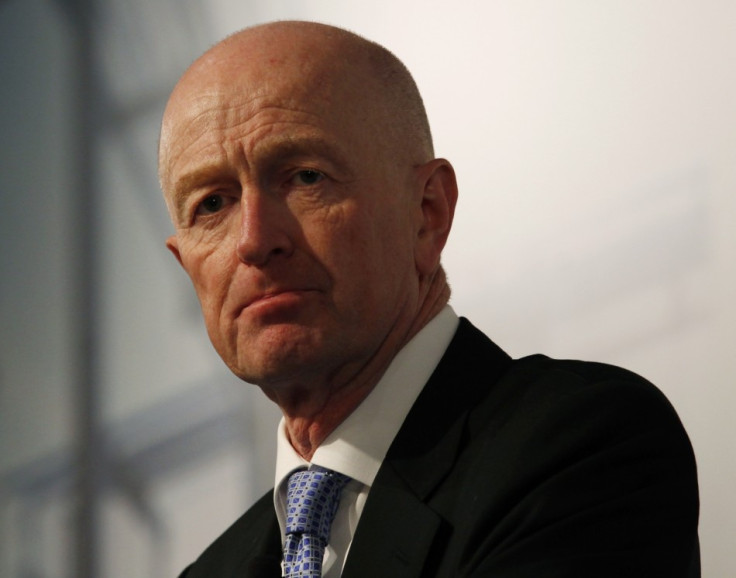
Reserve Bank of Australia: (Glenn Stevens)
Last meeting: 4 December
Next meeting: 5 February
Key rate: "Cash rate" at 3 percent
2012 GDP: 3.5 percent; 2013 Forecast: 2.9 percent
2012 Inflation: 1.8 percent; 2013 Forecast: 2.8 percent
Highlights from Minutes: "Globally, economic news over the past month had a slightly more positive tone than was the case a few months earlier. Importantly, there were further signs that the pace of growth had stabilised in China, contributing to a general stabilisation in key commodity prices. The US economy had continued to grow at a moderate pace, although the uncertainties posed by the 'fiscal cliff' remained unresolved.
The available indicators suggested that the Australian economy had expanded at around trend over the year to the September quarter. Mining investment had made a further contribution to growth in the September quarter (although the outlook had softened a little further). There were also tentative signs that dwelling investment was turning up, but the outlook for non-mining investment overall in the year ahead remained subdued."
The Story:
Australia's economy is, of course, inexorably linked to the China growth story and as a result has struggled to maintain its pace over the past few months. GDP slowed to 0.5 percent last quarter from the previous three months, the slowest pace of advance in nearly two years.
A concurrent pledge by Labour Prime Minister Julia Gillard to deliver the first balanced budget since 2009 - since abandoned by treasurer Wayne Swann - has led to what Steven's has described as a "constrained" programme of public spending. To counteract the austerity measures - and stoke domestic demand as exports decrease - the RBA has cut rates on no fewer than six separate occasions since November of last year.
The RBA has a preferred inflation target of between 2 percent and 3 percent. Consumer prices slowed to a 1.8 percent annual advance this month, according to the Melbourne Institute, from a 2.2 percent reading in November. Wages, the Institute said, grew by 2 percent in the three months including December from 1.7 percent in the previous three month period. Stevens has said he's seeing some "lumps" in consumer price data but that he is not concerned that the headline rate will advance beyond the RBA's target range.
http://www.rba.gov.au
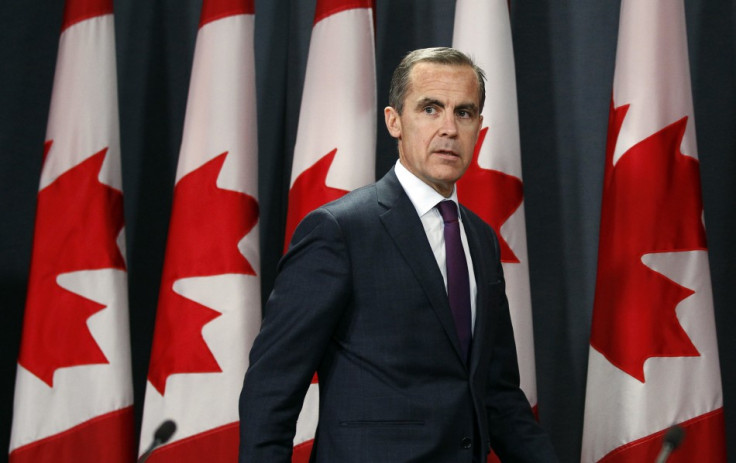
Bank of Canada: (Mark Carney)
Last meeting: 4 December
Next meeting: 23 January
Key rate: "overnight rate" at 1 percent
2012 GDP: 2.0 percent; 2013 Forecast: 1.8 percent
2012 Inflation: 1.6 percent; 2013 Forecast: 1.8 percent
Highlights from Minutes: "The global economy has unfolded broadly as the Bank projected in its October ... The economic expansion in the United States is progressing at a gradual pace and is being held back by uncertainty related to the fiscal cliff. Europe remains in recession. Chinese growth appears to be stabilizing ... financial conditions remain simulative, though vulnerable to major shocks from the U.S. or Europe ... Over time, some modest withdrawal of monetary policy stimulus will likely be required, consistent with achieving the 2 per cent inflation target. The timing and degree of any such withdrawal will be weighed carefully against global and domestic developments, including the evolution of imbalances in the household sector."
The Story:
Slower economic growth and easing headline inflation haven't kept outgoing governor Mark Carney from clinging to his hawkish bias for higher rates - a tone he's maintained for a many months even as the global recovery began to slip. He has reason to flex the bank's verbal persuasion, given the complacency Canadians seem to have with respect to piling on debt (a logical outcome from having missed the worst of the global financial crisis in 2008). The ratio of household debt to disposable income, however, now sits at a record 164.6 percent and the nation's housing market is getting fairly close to bubble territory.
That said, while Carney - and his as-yet-to-be-named successor - may talk a tough game on rates, there's little to be accomplished by actually doing so. Canada's structural inflation is not dissimilar to that of the United Kingdom, where home energy and transport costs rise five to seven times faster than wages. Higher domestic rates also pull more "fast money" into the Canadian dollar, blunting export growth and adding to inflationary pressures. With growth slowing both at home and in its biggest trading partner south of the border, the IMF has urged the bank, in its latest country report, that "the beginning of the monetary tightening cycle should be delayed until growth strengthens again."
http://www.bankofcanada.ca/monetary-policy-introduction/key-interest-rate/schedule/
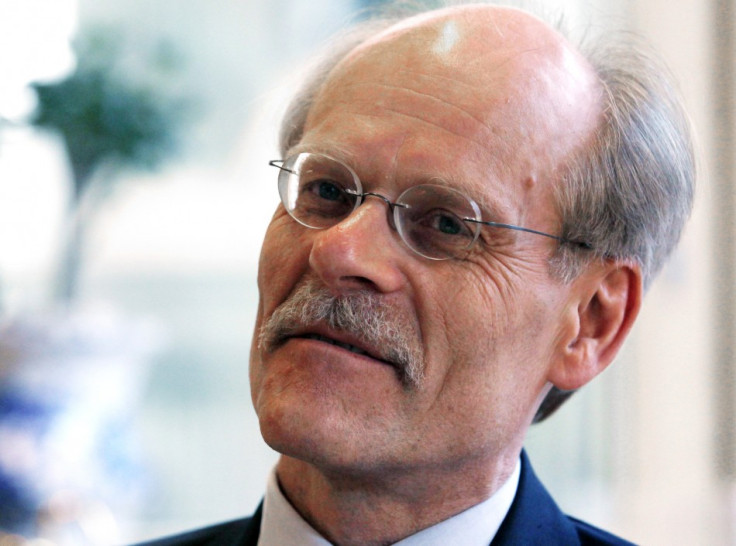
Riksbank: (Stefan Ingves)
Last meeting: 18 December (Minutes published 8 January)
Next meeting: 12 February
Key rate: "Repo rate" at 1 percent
2012 GDP: 0.9 percent; 2013 Forecast: 0.5 percent
2012 Inflation: 0.9 percent; 2013 Forecast: 0.9 percent
Highlights from latest statement: "Developments in the euro area are weak and still marked by the debt crisis. Although the uncertainty on the financial markets has declined during the autumn, much work remains to be done to remedy the problems in the euro area countries. There are nevertheless signs of improvement in other parts of the world, for instance, the United States and China ... The situation in the euro area is still uncertain and could worsen, which could have further negative effects on the Swedish economy. In this situation, the repo-rate path may need to be lower. At the same time, growth and inflation in Sweden can also be higher. When household and corporate sector expectations of future developments improve, consumption and investment may grow at a faster pace than expected and inflation may be higher. This would justify a higher repo-rate path."
The Story:
Ingves and his colleagues have a reputation for clearly articulating the Riksbank's path on future interest rate moves. His latest statement, however, does seem to go out of its way to remind investors that the current "path" is exactly that and not a "promise" for specific moves on the key "repo" rate.
Interest rate traders and analysts seem to be pricing in a higher degree of probability for an early spring rate cut - taking it to 0.75 percent - than the Bank itself seems to suggest. Much will depend both on the pace of domestic growth - which the Riksbank recently marked down to 10.3 percent for next year - and its preferred gauge of inflation, which it anticipates will run at a rate of 0.9 percent next year before accelerating to 2 percent in 2014. Unemployment may play a key role in both measurements, however, and if the Riksbank has low-balled its newly revised estimate of 8.2 percent, the market's interpretation of the rate "path" may prove correct and a February cut will become increasingly likely.
Sweden's influential thinktank, the Swedish National Institute for Economic Research, says sinking consumer confidence and the potential for the economy to slip into recession in the first three months of next year should force the Riksbank to cut its key rate to a record low 0.25 percent by the end of 2013.
http://www.riksbank.se/en/
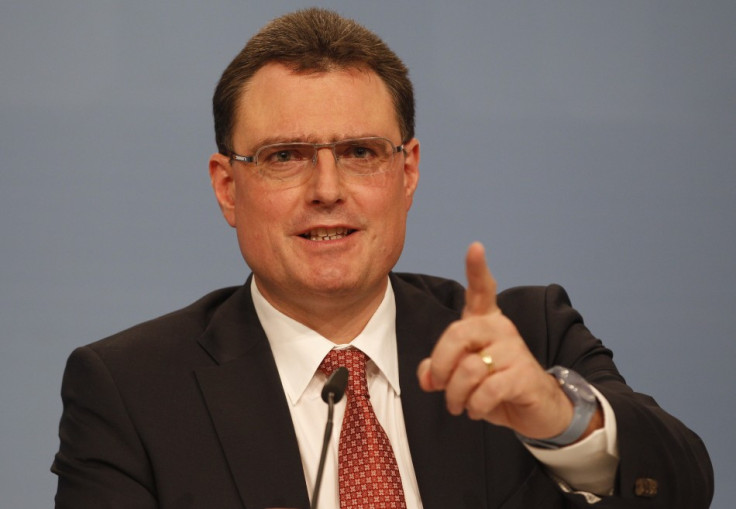
Swiss National Bank: (Thomas Jordan)
Last Meeting: 13 December
Next Meeting: 14 March
Key rates: 3-month Libor target rate at 0.0 percent to 0.25 percent
2012 GDP: 0.9 percent; 2013 Forecast: 1.3 percent
2012 Inflation: -0.7 percent; 2013 Forecast: 0.2 percent
Highlights from minutes (Monetary Policy Assessment): "The Swiss franc is still high. An appreciation of the Swiss franc would compromise price stability and would have serious consequences for the Swiss economy. Consequently, the SNB will continue to enforce the minimum exchange rate with the utmost determination. It is prepared to buy foreign currency in unlimited quantities for this purpose ... The downside risks for the Swiss economy remain considerable. Although the measures announced by the European Central Bank have significantly reduced the probability of extreme developments in the monetary union, there is still substantial uncertainty in connection with the management of the debt crisis in the euro area. It also remains to be seen how far the upcoming budget consolidation in the US will hamper growth."
The Story:
The SNB's focus on defending the value of the franc - which began 15 months ago with the explicit cap of 1.20 against the euro announced by former president Philipp Hilderbrand - continues to define its response to the weakening Swiss economy. Inflation is expected to decline both this year and next and exports continue to suffer as a result of the franc's strength on global foreign exchange markets.
Jordan has hinted at "substantial" currency market interventions to prevent a sustained rise and seems to be getting some domestic support in the form of extra charges levied on foreigners holding franc deposits in Swiss banks by UBS and Credit Suisse.
An under-reported concern, however, in the form of soaring property prices, continues to trouble Jordan and his colleagues. New lending rules were put in place earlier this year and some measures of residential property risk are at the highest levels in at least two decades.
Growth is still pegged at around 1 percent for this year by the SNB but reduced marginally to between 1 percent and 1.5 percent for next year.
http://www.snb.ch/en/iabout/snb/hist/id/hist_archiv
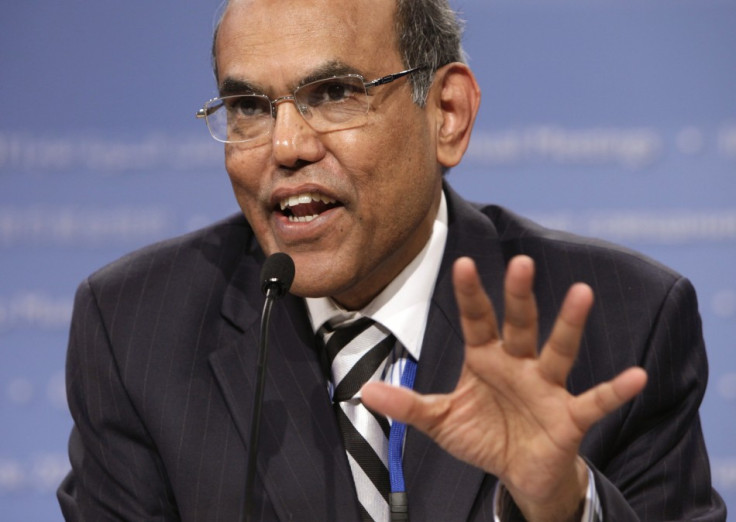
Reserve Bank of India: (Dr. Duvvuri Subbarao)
Last Meeting: 18 December
Next Meeting: 29 January
Key rates: "Policy repo rate" at 8 percent; "Cash Reserve Ratio" at 4.25 percent
2012 GDP: 5.3 percent; 2013 Forecast: 5.7 percent
2012 Inflation: 9.9 percent; 2013 Forecast: 7.6 percent
Highlights from Minutes: "Since the Second Quarter Review (SQR) of October 2012, the global economy has shown some signs of stabilisation although the situation remains fragile. While activity is picking up in the US and the UK, near-term prospects in the euro area are still weak. Moreover, there is no clarity as yet on how the US 'fiscal cliff' might be managed. While several emerging and developing economies (EDEs) are gradually returning to higher growth, weak external demand and contagion risks from advanced economies (AEs) render them vulnerable to further shocks ... On the domestic front, there are some incipient signs of pick-up though growth remains significantly below its recent trend. Also, though consumer price inflation remains stubborn, the pace of moderation in wholesale price inflation has been faster than anticipated. With food and manufacturing prices expected to edge down further, inflationary pressures may ease somewhat in the coming months."
The Story:
India's reputation as a legitimate challenger to China's dominance of the so-called Bric economies has taken a significant hit over the past year as disappointing growth and persistently fast inflation continue to cleave the economic gap between the two historic rivals. Much of India's woes, however, seem far beyond the remit of the RBI, as subsidies in food and fuel markets create artificial demand that drives prices higher and paralysing bureaucracy hampers foreign investment and domestic innovation.
The RBI has tried its best to manage these headwinds - cutting its key repo rate by 50 basis points in April - but is under pressure to do more as the government pledges to trim spending and reduce its budget deficit to 3 percent by 2017. Timing will be critical - false dawns of fiscal discipline have been forecast on many previous occasions and the IMF thinks this year's deficit is much more likely to approach 9 percent than the government's ambitious 5.3 percent target
However, a recent RBI statement suggests a rate move may be in the works: "As macro-risks from inflation and twin deficits recede further, that could yield space down the line for monetary policy to respond more effectively to growth concerns."
http://www.rbi.org.in/home.aspx

Central Bank of Russian Federation: (Sergey M. Ignatiev)
Last Meeting: 10 December
Next Meeting: "first half" of January
Key rates: "auction based overnight repo rate" at 5.5 percent
2012 GDP: 3.4 percent; 2013 Forecast: 2.5 percent
2012 Inflation: 5.1 percent; 2013 Forecast: 6.7 percent
Highlights from Minutes: "In November the pace of inflation was unchanged at 6.5% over a year ago. Core inflation remained at 5.8%. In the recent months stabilization was observed in a wide range of consumer goods and services prices, while the growth of non-food goods prices decelerated. Still, the pace of inflation remains above the target range, which may affect economic agents' expectations and thus poses inflation risks. On the other hand, the September 2012 increase in the Bank of Russia interest rates is to some extent curbing inflation expectations. Moreover, any significant demand-pull price pressures are absent ... In the third quarter the pace of GDP growth declined to 2.9% over a year ago, reflecting some cooling in economic activity. The dynamics of the key macroeconomic indicators in October pointed to continuation of this trend with the growth of industrial production and retail sales subsiding. However, economic confidence indicators remain positive and labour market conditions together with credit expansion provide support to the domestic demand. According to the Bank of Russia estimates, the gross output remains close to its potential level."
The Story:
The CBR has taken the initial steps towards easing by dropping its hawkish rhetoric earlier this month with the assessment that "the current level of money market interest rates is appropriate for the near future".
The recent upward trend in Russia's industrial and manufacturing output aside, the outlook for growth next year and beyond does indeed appear to require a sharper response. Droughts pummelled agricultural output the year and the world's third-biggest wheat exporter said crop sales would likely fall by around 24 percent as a result.
The CBR's challenge is a daunting one, however, given the stickiness of headline inflation - driven by higher food prices - and the paucity of domestic demand. Attempts to wean the Russian economy away from its deep reliance on commodity prices have, to date, proven only marginally successful. Oil prices still dictate the pace of growth and government revenue generation.
The bank has, however, been praised for its loosening of monetary policy framework, particular by narrowing its so-called "policy corridor" recently with a 25 basis point hike in bank deposit rates and parallel cut in the nation's foreign exchange swap rate. It will also link interest rates on medium-term refinancing facilities to its key RUONIA auction rate in a move that should also add "back door" monetary easing in the first half of the next year.
http://www.cbr.ru/eng/
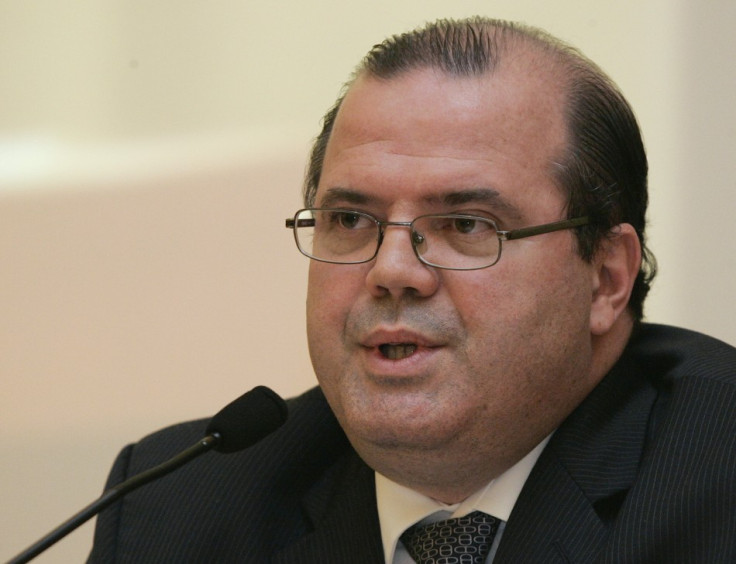
Central Bank of Brazil: (Alexandre Antonio Tombini)
Last Meeting: 27 November
Next Meeting: 15 January to 16 January
Key rates: "Selic rate" at 7.25 percent
2012 GDP: 1.1 percent; 2013 Forecast: 3.0 percent
2012 Inflation: 5.4 percent; 2013 Forecast: 5.8 percent
Highlights from Minutes: "Global economy faces a period of above-than-usual uncertainty, with prospects of low growth for a prolonged period, despite the recent accommodation in the volatility and risk aversion indicators. High unemployment rates for a long period, coupled with the implementation of fiscal adjustments, the limited space for countercyclical actions and political uncertainties are translated into projections of low growth for mature economies, mainly in Europe. The compound leading indicator released by the Organization for Economic Cooperation and Development, related to September, indicates stabilization in the growth of the United States and China and some deterioration in the Euro Area and in Japan ..."
The Story:
Brazil's benchmark policy rate - the Selic - has been nearly halved over the past year following an unprecedented 525 basis point worth of cuts, the most in the G20, that have taken it to a record low. But even with a solid economic recovery on the cards, the bank is still prepared to lower its 2013 inflation forecast to 4.9 percent earlier this month - still be firmly above the bank's preferred 4.5 percent target for the third year running.
A series of measures proposed by President Dilma Rousseff to spark growth in the second-largest of the emerging market economies has led to an impressive expansion of government spending that, along with higher gasoline prices and a weakening real, stoked faster-than-expected inflation.
Brazil's economic success has also had a demonstrable impact on social mobility, which could also put upward pressure on inflation, with more than 50 percent of households now considered "middle class".
The bank has eased reserve requirements for banks wishing to bet against the US dollar in an effort to stabilise the real, which has been one of the weakest of the world's major currencies this year, and slow the decline in foreign investment. The bank is targeting a rate of 2.05 reais against the dollar.
http://www.bcb.gov.br/?english
© Copyright IBTimes 2025. All rights reserved.




















